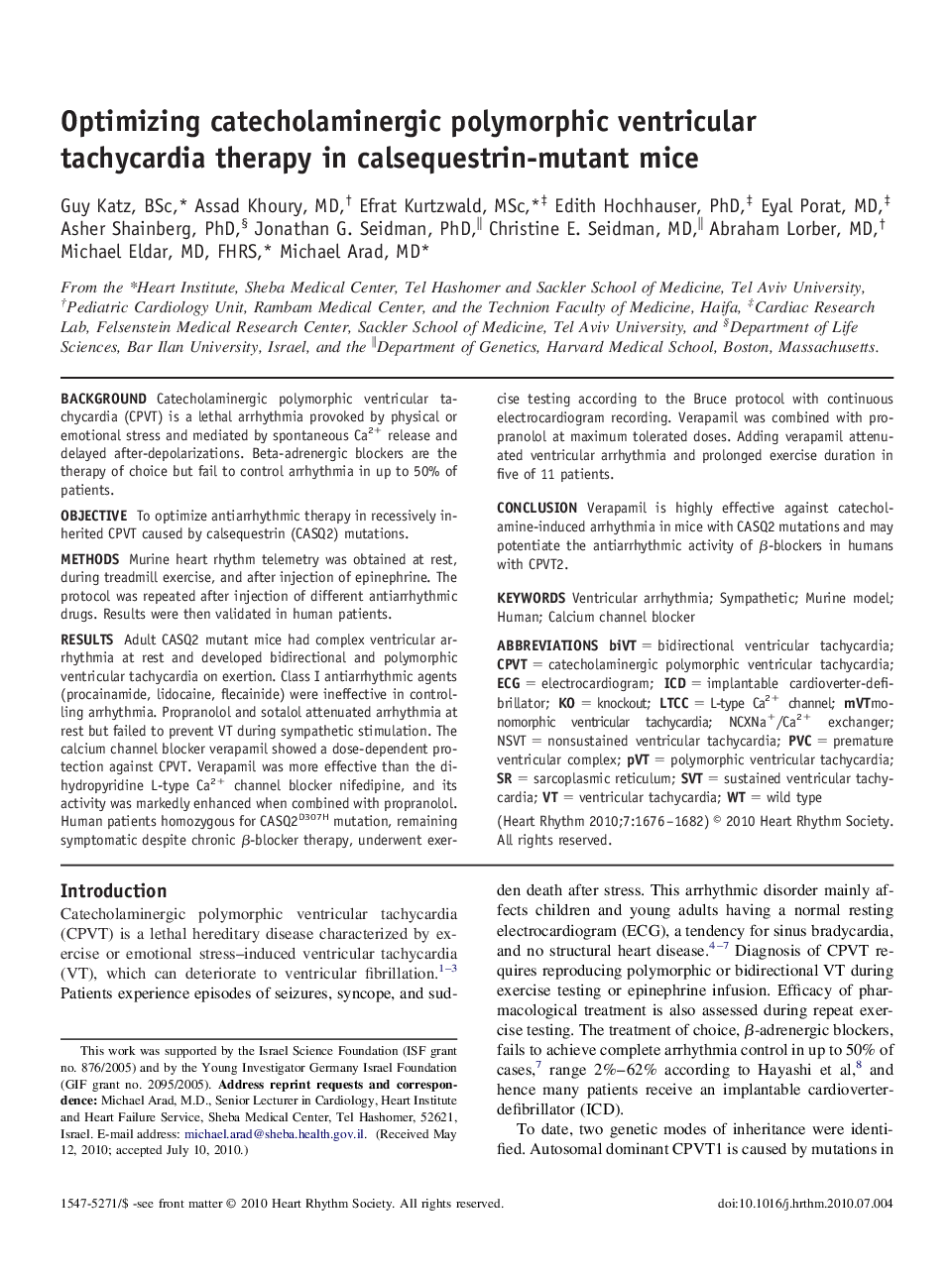| کد مقاله | کد نشریه | سال انتشار | مقاله انگلیسی | نسخه تمام متن |
|---|---|---|---|---|
| 2922910 | 1175858 | 2010 | 7 صفحه PDF | دانلود رایگان |

BackgroundCatecholaminergic polymorphic ventricular tachycardia (CPVT) is a lethal arrhythmia provoked by physical or emotional stress and mediated by spontaneous Ca2+ release and delayed after-depolarizations. Beta-adrenergic blockers are the therapy of choice but fail to control arrhythmia in up to 50% of patients.ObjectiveTo optimize antiarrhythmic therapy in recessively inherited CPVT caused by calsequestrin (CASQ2) mutations.MethodsMurine heart rhythm telemetry was obtained at rest, during treadmill exercise, and after injection of epinephrine. The protocol was repeated after injection of different antiarrhythmic drugs. Results were then validated in human patients.ResultsAdult CASQ2 mutant mice had complex ventricular arrhythmia at rest and developed bidirectional and polymorphic ventricular tachycardia on exertion. Class I antiarrhythmic agents (procainamide, lidocaine, flecainide) were ineffective in controlling arrhythmia. Propranolol and sotalol attenuated arrhythmia at rest but failed to prevent VT during sympathetic stimulation. The calcium channel blocker verapamil showed a dose-dependent protection against CPVT. Verapamil was more effective than the dihydropyridine L-type Ca2+ channel blocker nifedipine, and its activity was markedly enhanced when combined with propranolol. Human patients homozygous for CASQ2D307H mutation, remaining symptomatic despite chronic β-blocker therapy, underwent exercise testing according to the Bruce protocol with continuous electrocardiogram recording. Verapamil was combined with propranolol at maximum tolerated doses. Adding verapamil attenuated ventricular arrhythmia and prolonged exercise duration in five of 11 patients.ConclusionVerapamil is highly effective against catecholamine-induced arrhythmia in mice with CASQ2 mutations and may potentiate the antiarrhythmic activity of β-blockers in humans with CPVT2.
Journal: Heart Rhythm - Volume 7, Issue 11, November 2010, Pages 1676–1682